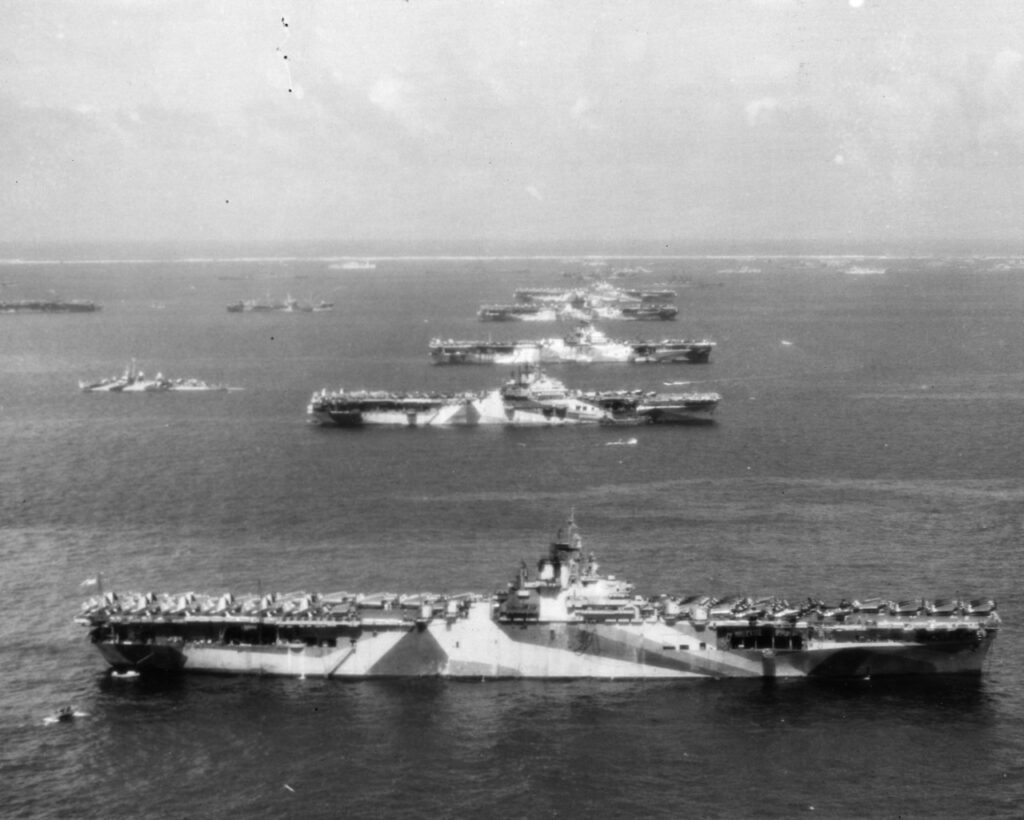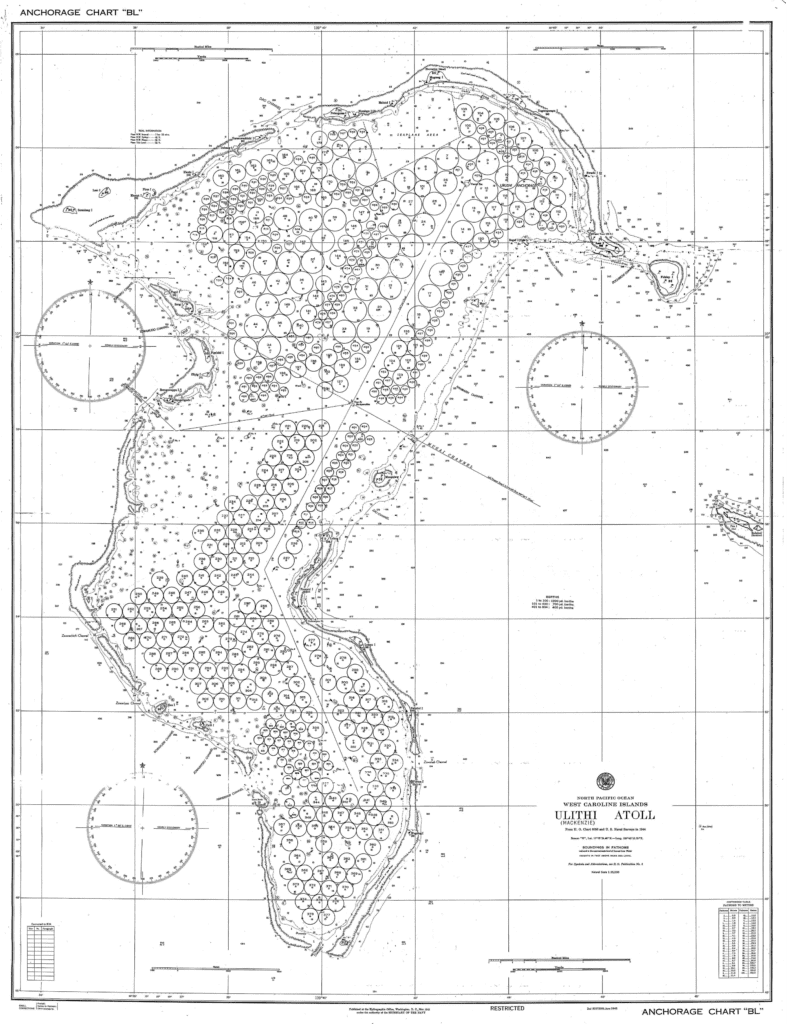USS Franklin Arrives at Ulithi Atoll, 13 March 1945

USS Franklin arrived at Ulithi Atoll on 13 March 1945.* By that time in the war, the atoll, with its huge, protected anchorage, had become the largest US Navy base in the Pacific Theater of Operations (PTO) and the entire world. It could hold 700 or more ships, including carriers and battleships. It became the key logistics base in the fight against the Japanese in the last two years of World War II.
As she approached Ulithi, Franklin overtook slower ships, transports, oilers, and other supply ships, also on their way to the base to support Operation Lucky Day, the upcoming mission to reduce the ability of the Japanese to oppose the invasion of Okinawa.
USS Franklin Receives Honors From Task Force 58
In his oral history for the US Naval Institute, the ship’s navigator, Lieutenant Commander Stephen Jurika, recalled
The day before we pulled into Ulithi we saw signs that American naval ships were converging on Ulithi from, it seemed to us, all points of the compass. We were making about 20 knots and most of these things we passed were AFs. AOs, oilers, ammunition ships, amphibious ships – everybody – headed for Ulithi lagoon. By the time we arrived next morning about 11:00, we steamed through the principal entrance to the lagoon, and I was simply amazed, as I suppose were most of the people on board the ship, at the vast armada. There were at least 20 carriers there, lined up in carrier anchorages, all anchored, not moored to buoys, anchored. Then there were cruisers and there were battleships, there were just flotillas of destroyers, there were ammunition ships, and tankers, just all kinds.
Ulithi lagoon looked to me as though it contained the entire US fleet, let alone far more than there were prewar in the entire Pacific fleet.
As we came in, the ships, knowing that the Franklin had been damaged at the Philippine sea not too long before, had their crews up on deck. Even though it was a weekday and before lunch, everybody who was topside stood at attention, honors were rendered and messages flashed, “Welcome back to the fighting forces,” and all sorts of words like that. We steamed in, past those carriers, all anchored facing into the wind.1

Admirals Davison and Bogan Arrive
Captain Gehres steered her to Berth 21. The deck log stated:
0844 Anchored in Berth #21, Northern Anchorage, Ulithi Islands, in 24 fathoms of water, coral and sand bottom, with 120 fathoms of chain to the starboard anchor, on the following anchorage bearings: Beacon “Able” 180.8 (t), Beacon “Baker” 094.5 (t), Beacon “Charlie” 069.5 (t). Let fires die out under boilers #1 and 8, boilers #4 and 5 in use for auxiliary purposes, with enginerooms kept on four hours steaming notice. 2

The deck log shows that Admirals Davison and Bogan arrived at 1320 and later barges containing stores arrived. Several personnel were transferred on and off the ship. (Admiral Bogan would be riding along as an observer.)
Lt. Cmdr. Jurika reported that the Captain, the exec, Joe Taylor, and he went over to one of the islands where a section had been reserved for admirals and captains. The three, all being career Navy, knew quite a few of the others there, with Jurika referring to it as “…sort of old home week.”3
Franklin would overnight in Berth 21 before departing the anchorage the next day.
*Ulithi was on the west side of the International Date Line which meant it was 12 March in Hawaii and the US mainland.
Did you arrive here via a search engine? I am the author of the forthcoming book, Heroes By The Hundreds: The Story of the USS Franklin (CV-13). In addition to writing about the bravery of the crews that saved her, I will be writing about the lessons we can learn in leadership and decision-making. I’ll also write about the changes the US Navy made because of those lessons learned.
Feel free to follow me on Facebook. There, I am M. Glenn Ross, Author. I also send out a monthly newsletter, Glenn’s After-Action Report, writing about subjects I find interesting in my research. You can sign up for it below. Feel free to leave a comment or ask a question. Thanks for reading.-Glenn